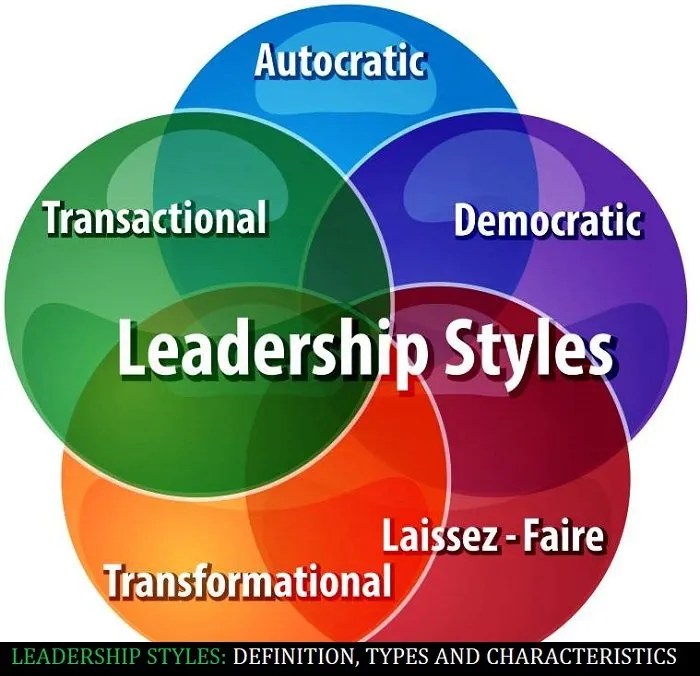
An integral part of management and in most aspects of human life and endeavour is leadership. Leadership could mean different things in different context. A leader is someone who leads, someone who inspires confidence, motivation and passion in his/her followers; a leader has a vision and set paths towards achieving said vision; a leader ensures his/her has the necessary tools and support needed to actualize their personal and collective dreams.
A leader is both creative and empathetic; someone who strives for consistent improvements. A leader harness the tools and resources at his/her disposal to achieve the collective goals and ensure optimum benefits for the greater good. A leader asks those rather difficult and seemingly scary questions, seek answers to them embraces innovations and critical, outside-the-box thinking while being opened to honest feedbacks and criticism and ensuring transparency and accountability. Having talked about who a leader is, this article centers on leadership styles, its meaning and the various types of leadership styles available.
Key characteristics of a leader
- A leader must have a vision. This is invaluable as the welfare of the followers and organization as a whole, rests on the shoulders of the leader because of the confidence and trust reposed in him/her as capable of leading them towards the achievement of the set goals.
- A leader must have a sense of purpose. He/she should be able to examine his/herself and ask these questions: why am I leading? What is my purpose for leading? What do I stand to achieve in this leadership task? A leader with a sense of purpose give gives the followers added confidence that their trust bequeathed in him is not misplaced.
- Motivation. A leader should be capable of motivating his/her followers towards creating values and achieving goals. There are bound to be times when team members will feel tired and bored and intensely lacking in motivation to carry on. A good leader will be able to, at such times, rally together the team and get them dreaming and believing again and working towards the goals and objectives set down for the team.
- A leader ought to be empathetic. Being capable of aligning with and relating with the human sides of his/her followers is a key attribute of a good leader. Being able to understand, listen and share, show an appreciation for the efforts of their followers.
- Constantly striving for improvement. A good leader can not afford to relent on applause of his/her previous performance and feats but must be constantly trying to improve and do better, a striving for perfection.
Understanding who a leader is, set the stage for understanding the various leadership styles and which best to adopt as fitting a personality.
Leadership Style: What does it mean?
Styles of leadership refers to the approach and manner of providing direction, implementing plans, and motivating people. Observed from the perspective of the team/group members, it includes the total pattern of explicit and implicit actions performed by their leader. John Kotter defined the term leadership styles as the methods of leaders in providing direction, executing plans and motivating their followers. According to Wikipedia, leadership style is a leader’s method of providing direction, implementing plans, and motivating people. From the foregoing, three key words stands out when defining leadership styles: provide, implement/execute and motivate.
Leadership style also refers to the behavioral patterns that a leader adopt to influence the behavior of his followers, that is, the way he/she provides clear and concise directions to his/her team/group members and motivates them to accomplish the given objectives.
Types of Leaderships
There are various types of leadership styles. They are:
Autocratic leadership:
This is a leadership style in which a single leader or small group of leaders make decisions without the input or consultation of others. In this style, the leader has complete control and authority over their subordinates, and typically makes all of the decisions for the organization or team.
Some of the key characteristics of autocratic leadership include:
- Centralized decision-making: The leader makes all decisions, and does not delegate decision-making to others.
- Direct control: The leader exercises direct control over their subordinates, often with a focus on maintaining order and discipline.
- Little input from others: The leader does not solicit input or feedback from team members, but instead expects complete obedience and compliance.
- High pressure and high expectations: The leader sets high expectations for their team members and places significant pressure on them to meet those expectations.
- Limited creativity and innovation: Because the leader is the sole decision-maker, there is limited room for creativity or innovation from team members.
While autocratic leadership can be effective in certain situations, such as in times of crisis or when decisions need to be made quickly, it can also have negative impacts on team morale, engagement, and creativity. In general, this style of leadership is most effective in situations where the leader has a high level of expertise or experience, and there is a clear need for strong direction and control.
2. Transformational Leadership
This is a type of leadership style in which leaders inspire and motivate their followers to achieve their goals and reach their full potential. In this style, the leader works to create a positive and supportive work environment, encourages creativity and innovation, and helps followers develop their skills and potential.
Some of the key characteristics of transformational leadership include:
- Vision and inspiration: Transformational leaders have a strong vision for the future and are able to communicate that vision in a way that inspires and motivates their followers.
- Empowerment: Transformational leaders empower their followers by giving them the tools and resources they need to succeed, and by delegating decision-making authority to them.
- Supportive work environment: Transformational leaders work to create a positive and supportive work environment in which their followers feel valued and supported.
- Coaching and development: Transformational leaders help their followers develop their skills and reach their full potential by providing coaching, feedback, and developmental opportunities.
- Creativity and innovation: Transformational leaders encourage creativity and innovation by allowing their followers to experiment and take risks, and by providing them with the resources they need to explore new ideas.
Transformational leadership is an effective style of leadership that can lead to higher levels of engagement, motivation, and job satisfaction among followers. By inspiring and empowering their followers, transformational leaders can create a culture of innovation and collaboration that can lead to long-term success for their organization or team.
3. Servant leadership:
This is type of leadership style is one which leaders prioritize the needs of their followers above their own needs or interests. In this style, the leader focuses on empowering and supporting their team members, and works to create a positive and collaborative work environment.
Some of the key characteristics of servant leadership include:
- Putting others first: Servant leaders prioritize the needs of their followers, and work to serve them rather than expecting to be served.
- Empowerment: Servant leaders empower their followers by providing them with the resources, tools, and support they need to succeed.
- Collaborative approach: Servant leaders work collaboratively with their team members to achieve goals and solve problems, rather than dictating solutions or decisions.
- Active listening: Servant leaders actively listen to their team members and take their input and feedback into account when making decisions.
- Compassion: Servant leaders demonstrate compassion and empathy towards their team members, and work to create a positive and supportive work environment.
Overall, servant leadership is an effective style of leadership that can lead to higher levels of engagement, motivation, and job satisfaction among followers. By putting the needs of their followers first, servant leaders can create a culture of trust and collaboration that can lead to long-term success for their organization or team.
4. Laissez-faire leadership:
Laissez-faire leadership, also known as delegative leadership, is a type of leadership style. Here the leader takes a hands-off approach and allows their team members to make decisions and complete tasks without much guidance or direction. In this style, the leader provides minimal supervision or direction, and allows team members to work independently.
The key characteristics of laissez-faire leadership include:
- Minimal guidance: Laissez-faire leaders provide minimal guidance or direction to their team members, and allow them to make decisions and complete tasks on their own.
- Trust in team members: Laissez-faire leaders trust their team members to make decisions and complete tasks without much supervision or direction.
- Limited involvement: Laissez-faire leaders are often not very involved in the day-to-day operations of their team or organization.
- Emphasis on autonomy: Laissez-faire leaders emphasize autonomy and independence among team members, and encourage them to take ownership of their work.
- Focus on results: Laissez-faire leaders are primarily focused on results and outcomes, and are less concerned with the process by which those outcomes are achieved.
While laissez-faire leadership can be effective in certain situations, such as when team members are highly skilled and experienced, it can also have negative impacts on team performance and outcomes. Without guidance and direction, team members may struggle to stay focused and motivated, and may not have a clear understanding of what is expected of them. In general, this style of leadership is most effective when team members are highly skilled and experienced, and there is a strong sense of trust and collaboration among team members.
5. Charismatic leadership:
Charismatic leadership is a type of leadership style where leaders inspire and motivate followers through their charisma, personality, and vision. In this style, the leader has a strong and compelling vision for the future, and is able to communicate that vision in a way that inspires and motivates their followers.
The key characteristics of charismatic leadership include:
- Vision and inspiration: Charismatic leaders have a strong and compelling vision for the future, and are able to inspire and motivate their followers to work towards that vision.
- Persuasive communication: Charismatic leaders are skilled communicators, and are able to persuade and influence others through their words and actions.
- Confidence and optimism: Charismatic leaders exude confidence and optimism, and are able to instill a sense of confidence and optimism in their followers.
- Personal charm and charisma: Charismatic leaders have a personal charm and charisma that draws others to them, and makes them effective at building strong relationships with their followers.
- Emotional intelligence: Charismatic leaders have a high level of emotional intelligence, and are able to understand and empathize with the emotions and motivations of their followers.
While charismatic leadership can be effective in certain situations, it can also have negative impacts on team performance and outcomes. Charismatic leaders may become overly focused on their own vision and goals, and may not take into account the perspectives or needs of their followers. In general, this style of leadership is most effective when combined with other leadership styles, such as transformational or servant leadership, that focus on collaboration and empowerment of followers.
6. Transactional leadership
This is another type of leadership style where leaders use rewards and punishments to motivate followers to achieve goals. In this style, the leader establishes clear expectations and goals for their team, and rewards or punishes team members based on their performance.
Some of the key characteristics of transactional leadership include:
- Clear expectations: Transactional leaders set clear expectations and goals for their team, and establish clear standards for performance.
- Rewards and punishments: Transactional leaders use rewards, such as bonuses or promotions, to motivate high performers, and punishments, such as reprimands or demotions, to discourage poor performance.
- Focus on results: Transactional leaders are primarily focused on achieving results and meeting performance targets, and use rewards and punishments to drive performance.
- Direct supervision: Transactional leaders provide direct supervision and guidance to their team members, and closely monitor their performance to ensure that they are meeting expectations.
- Emphasis on structure and order: Transactional leaders place a strong emphasis on structure and order, and work to ensure that their team members are following established procedures and protocols.
While transactional leadership can be effective in certain situations, it can also have negative impacts on team performance and outcomes. This style of leadership can be seen as overly controlling and may not allow for creativity and innovation among team members. In general, this style of leadership is most effective in situations where the task or goal is clear, and there is a need for a high level of control and structure.
7. Situational leadership:
In this type of leadership, leaders adjust their leadership style based on the situation at hand. In this style, the leader assesses the needs of their team and adapts their leadership style to meet those needs.
Some of the key characteristics of situational leadership include:
- Flexibility: Situational leaders are flexible and adaptable, and are able to adjust their leadership style to meet the needs of their team.
- Assessment of needs: Situational leaders assess the needs of their team and adjust their leadership style based on those needs.
- Varying leadership styles: Situational leaders may use different leadership styles, such as directive or supportive, depending on the situation and the needs of their team.
- Emphasis on development: Situational leaders work to develop their team members’ skills and abilities, and provide them with the support and guidance they need to succeed.
- Collaborative approach: Situational leaders work collaboratively with their team members to achieve goals and solve problems.
This form of leadership is an effective style of leadership that can lead to higher levels of engagement, motivation, and job satisfaction among followers. By assessing the needs of their team and adapting their leadership style accordingly, situational leaders can create a culture of trust and collaboration that can lead to long-term success for their organization or team.
8. Strategic leadership style
This style of leadership is one where the leader has the capability and the potential to set the vision for the organization and be capable of rallying together the followers/group members toward actualizing the set vision and ensuring that necessary tools and strategies needed to see this done are put in place.
According to Wikipedia, “Strategic leadership is the ability to influence others to voluntarily make decisions that enhance the prospects for the organization’s long-term success.” Team members in this leadership style are experienced and well equipped to properly and conveniently deal with unforeseen risks and threats.
9. Paternalistic Leadership Style
This style of leadership is one where the leader play the role of a father to the team members. The leader is a father figure and takes cares of the followers much the same way a father will. He shows complete concerns for his followers and their struggles, emphasize with them and in return receives their complete loyalty and trust. Group members under this style of leadership are expected to become fully committed to the ideals and beliefs of the leader, thereby diminishing any prospects of independence.
As a result of the trust and loyalty bequeathed to the leaders, employees turnover is minimal as employees are energized and encouraged to fully commit to the group/team for the long term. The major downside to this leadership style is the problem of favoritism as the leader could become predisposed and biased towards a team members and allowing said team member to influence group decisions.
So far, it can be seen that the various leadership styles work for various people in various situations. A good leader should be able to tacitly combine the attributes of all or at least most of the leadership styles and apply same to his/her leadership role. There is an important need for flexibility as a leader while at the same time ensuring a considerable level of firmness, responsibility and accountability in leadership.



